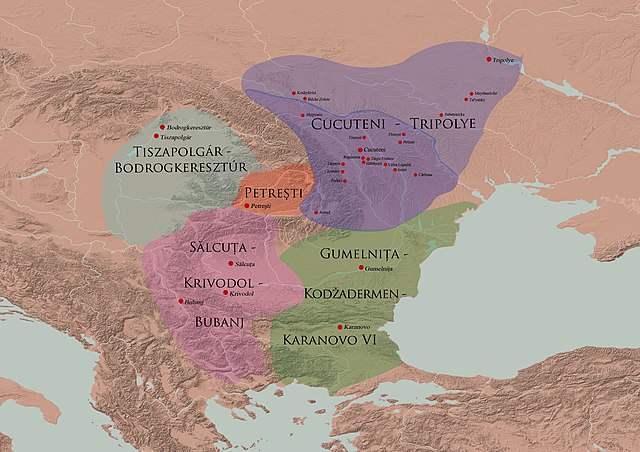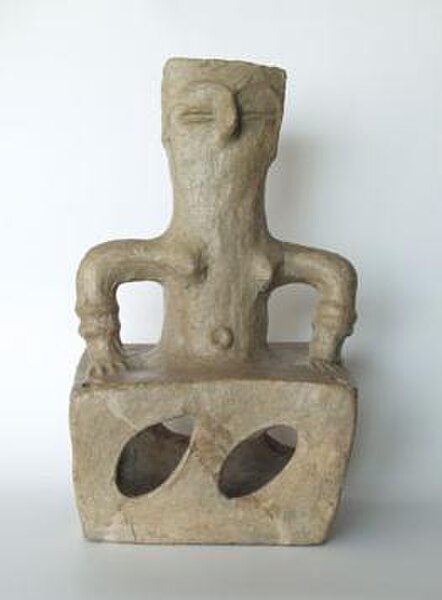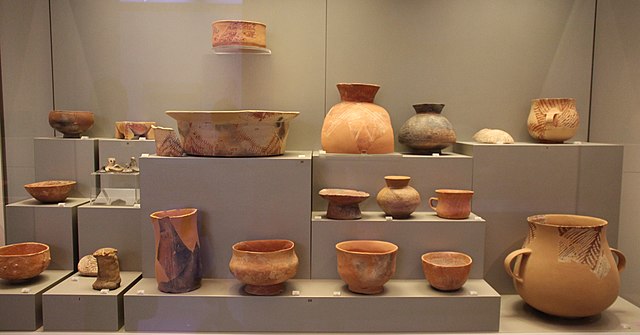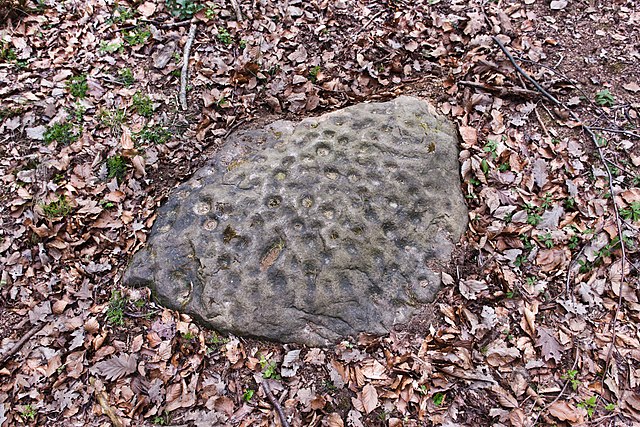Cucuteni–Trypillia culture
The Cucuteni–Trypillia culture, also known as the Cucuteni culture or the Trypillia culture, is a Neolithic–Chalcolithic archaeological culture of Southeast Europe. It extended from the Carpathian Mountains to the Dniester and Dnieper regions, centered on modern-day Moldova and covering substantial parts of western Ukraine and northeastern Romania, encompassing an area of 350,000 km2 (140,000 sq mi), with a diameter of 500 km.
Three Chalcolithic ceramic vessels (from left to right): a bowl on stand, a vessel on stand and an amphora, ca. 4300–4000 BC; from Scânteia, Romania and displayed at the Moldavia National Museum Complex
Chalcolithic cultures of Southeastern Europe, with major archaeological sites. (See: Old Europe)
Goddess figurine, Romania, 4050–3900 BC
Clay figurines, 4900–4750 BC, discovered in Balta Popii, Romania (Cucuteni Neolithic Art Museum, Piatra-Neamţ, Romania). The "Council of the Goddesses" was discovered consisting of 36 artifacts: 21 anthropomorphic statuettes, 13 thrones, 1 cone and 1 bead.
The European Neolithic is the period from the arrival of Neolithic technology and the associated population of Early European Farmers in Europe, c. 7000 BC until c. 2000–1700 BC. The Neolithic overlaps the Mesolithic and Bronze Age periods in Europe as cultural changes moved from the southeast to northwest at about 1 km/year – this is called the Neolithic Expansion.
Female figure from Tumba Madžari, North Macedonia
An array of Neolithic artifacts, including bracelets, axe heads, chisels, and polishing tools.
Ancient Greek Early and Middle Neolithic pottery 6500–5300 BC. National Museum of Archaeology, Athens
A stone used in Neolithic rituals, in Detmerode, Wolfsburg, Germany.








